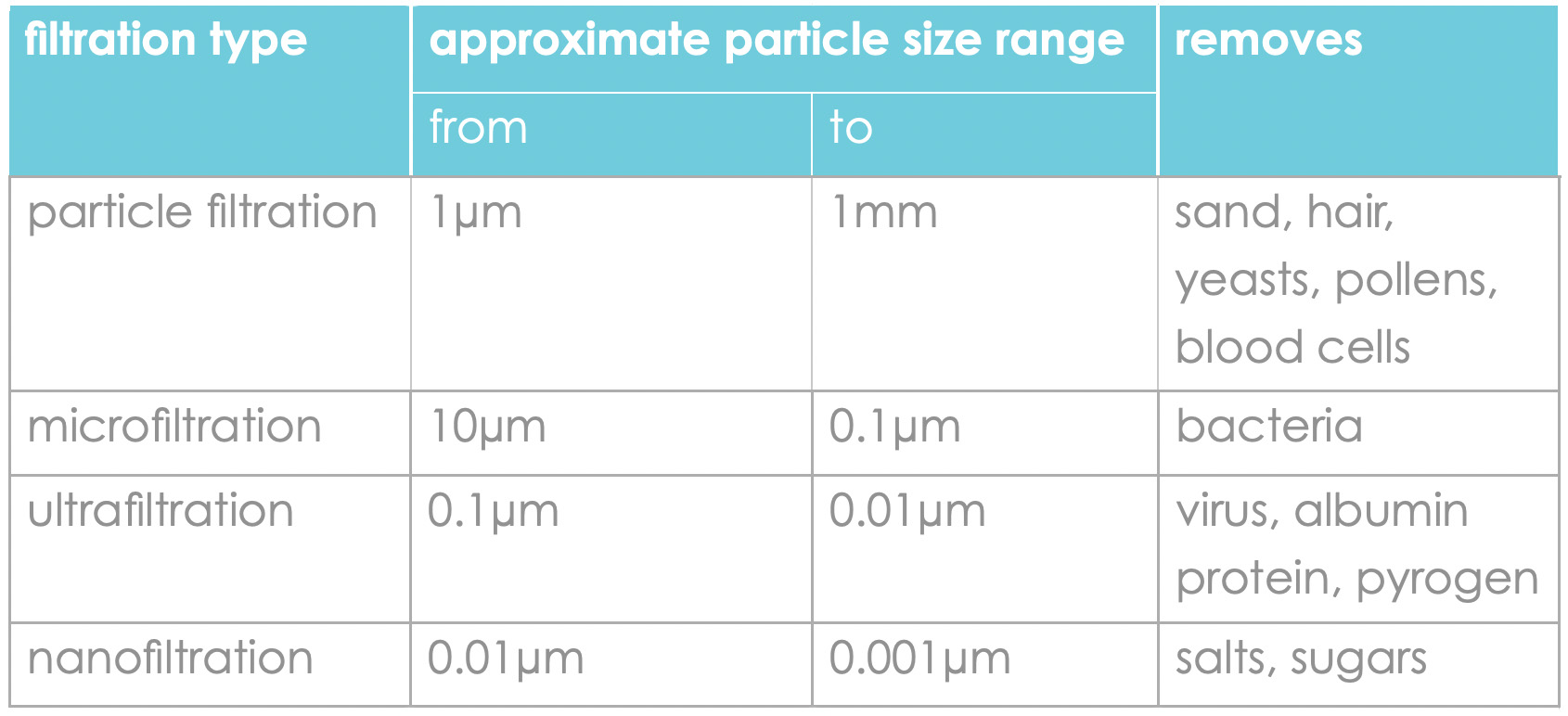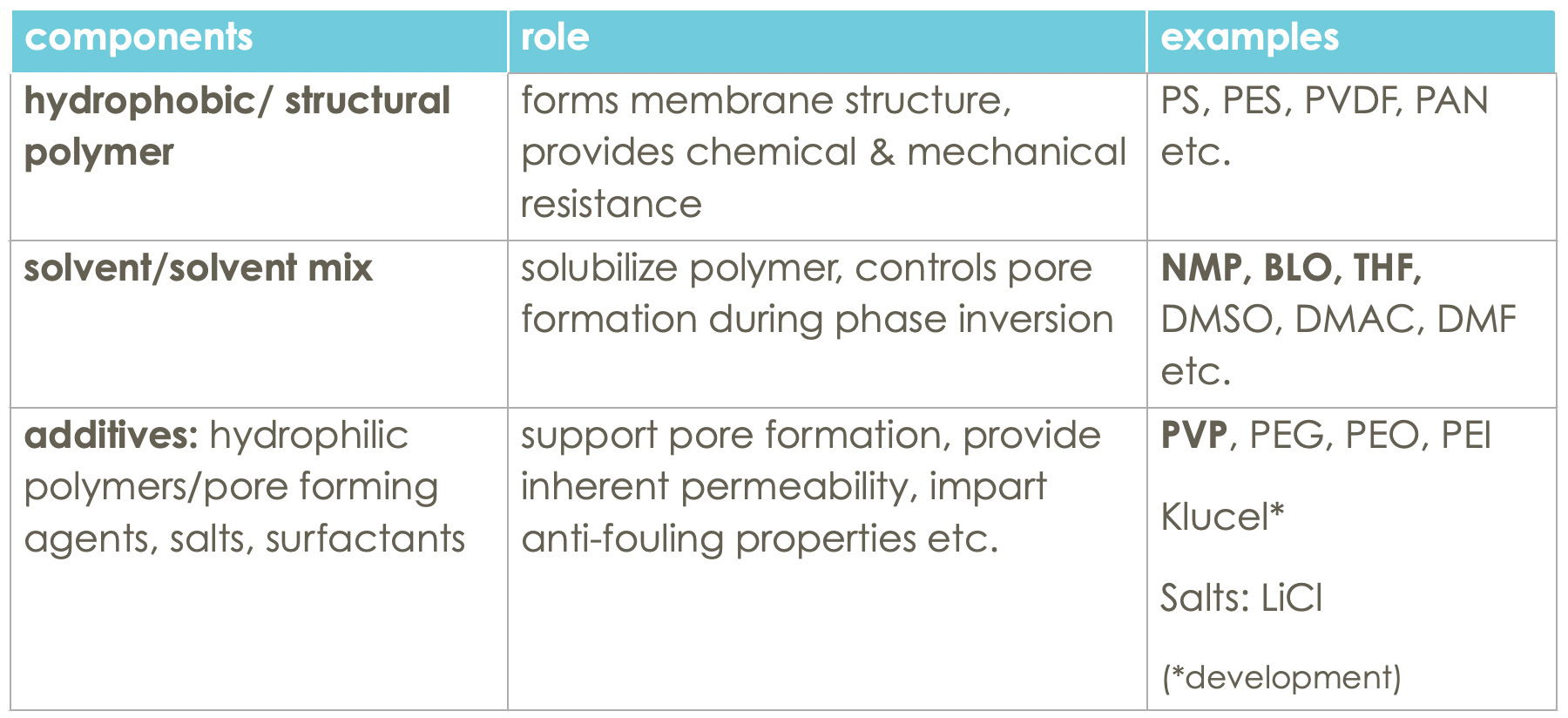membranes
who breaks down barriers and filters out the competition? we do.
Filtration is the removal of contaminants from liquids or gases by passage through a microporous medium such as a membrane. The level of filtration (or size range) required depends on the size of the impurities that are removed.
There are 4 main categories:

General composition of membrane doping solution contains below components

In the manufacturing process of filtration membranes, many additives can be used. These additives are often the essential components for the functionality of the end products.
Additives such as hydrophilic polymers, pore formers and salts are common types. Ashland acetylenic products such as polyvinylpyrrolidone (PVP) and its copolymers (such as PVP/VA™) are often added to hydrophobic polymers (such as PES, PS, PVDF) as a hydrophilic component. This allows control of the pore sizes in membranes. PVP is washed out at the end of manufacturing process by water to generate micro or nano pores for filtration, whilst some can remain in the membrane structure.
In new development “flat sheet”, Klucel™ hydroxypropylcellulose is used as pore former with PES which shows high efficiency in water flux. This development contributes to sustainability goals with naturally derived products.
Membrane production is often based on two different technologies: Thermally induced phase separation and solvent induced phase separation. Both processes lead to the formation of solvent poor and solvent rich phases. After removing solvent rich phase, pores are formed, which give the membrane its unique features.
M-pyrol (N-methyl pyrrolidone) is a polar aprotic solvent popularly used during membrane manufacturing processes. Solvent choice is a critical factor where it effects solvent evaporation time, temperature of casting gel, coagulation bath together with additive concentration would alter porosity and pore size distribution.
ceramic filter membranes
Purification of liquids through nano-, micro- or ultra-filtration is requiring ceramics with a well-defined porosity. Those ceramics, in tubular or sheet form, are often manufactured using extrusion processes. Good plastification for an optimal extrusion is key and so is shape retention. Ashland’s product portfolio offers various products as extrusion binders, which need to be chosen well for an optimal result. Depending on the used chemistries, the pore size can also be impacted.
products
Membrane products are listed below, use the filters to find the products that meet your specific needs.
read more >
pvp - Polyvinylpyrrolidone (PVP)
Polyvinylpyrrolidone (PVP) is a hygroscopic and amorphous polymer. It is used as pore forming agent. It is widely employed in the process of membrane manufacturing to control pore structure and enhance the hydrophilic properties of membrane surfaces with wide range of K values. It yields excellent chemical and temperature stability, improved hydrophilic properties of surfaces with less fouling and good biocompatibility. ...
m-pyrol™ - n methyl 2 pyrrolidone (NMP)
Excellent polymeric solvent, cosolvent and diluent. It is used as medium to dissolve the polymer during membrane manufacturing processes.
culminal™|benecel™ methylcellulose derivatives
Methylcellulose derivatives are used as plastification and extrusion aids (binders) to plastify inorganic materials so that they can be processed through extrusion. During the de-binding/sintering step of those ceramic filter membranes those materials burn out and contribute to pore formation. MC derivatives show thermogelling properties, which depend on the types and levels of substituents added to the cellulosic backbone.
klucel™ Hydroxylpropylcelluloses (HPC)
Klucel™ Hydroxylpropylcelluloses (HPC) are naturally derived products, which support developments toward greener solutions in membrane manufacturing. They also add hydrophilic properties to membrane surfaces with a wide range of molecular weights for controlling pore structure.



